

Project «Voices of Jewish settlements. Minsk region.»פיתוח קשרי התרבות בין העמים של ישראל ובלרוס
|
|---|
Website search |
|
MainNew publicationsContactsSite mapVitebsk regionMogilev regionMinsk region |
A BEAUTIFUL SHTETL Svir town.
Svir town.
I’ve traveled to and explored many Belarusian shtetls. I’ve always admired and been fascinated by their beautiful locations on the lake shores and river banks, surrounded by pine forests and oak groves. The shtetls with centuries-long histories were founded by rich and powerful people, who chose picturesque places for their possessions -a delight to the eye and soul. And the people who lived there from generation to generation treated the land not only as a place of residence, but also as something dear, cherishing and nurturing, caring about what they inherited. Yet, Svir, a shtetl, and, currently, an urban-type settlement in Myadel district, is located in a special place. 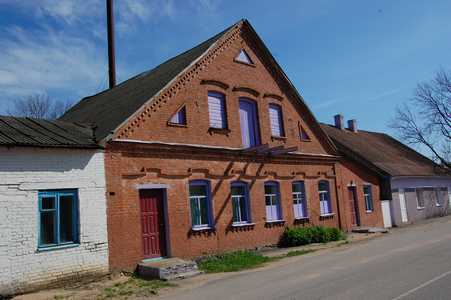 These houses remember the past shtetl.
These houses remember the past shtetl.
The administrative center of the Svirsky village council. Located on the shores of Lake Svir, 45 km west of Myadel, 180 km from Minsk, 26 km from the railway station Lyntupy, on the railway line Pabradė-Krulevschina. Road junction to Smorgon, Naroch, Brusy. There’s a huge mound literally hanging over the settlement. In the 16th century it was chosen by Prince Svirsky, the owner of the settlement, for his residence. There is a beautiful legend, or, maybe, not a legend, but a true story that at the time of the Civil War soldiers tried to dig up the mound, hoping to find buried treasures. However, they were stopped by a local gentleman, and, as a punishment, at his insistence, they made a new hill, carrying mud and soil in their helmets. The mound had to look like the head of the Polish eagle. In that form the mound has been preserved so far.  The door to the past.
The door to the past.
There’s an amazing view of the settlement and Lake Svir from the mound. The settlement’s main street Sovetskaya follows the contour of the lake shoreline. There are century-old houses, where once people lived, traded, drank and ate. Most part of these houses belonged to the Jews. The “Jewish Encyclopedia” (publisher: Brockhaus-Efron, volume 14, page 74) says that Svir is a shtetl in Vilna province, Sventsyansky District. In 1847, “Svir Jewish community” consisted of 491 people. According to the census of 1897, Svir had 1686 inhabitants, including 1114 Jews. There lived many Jews who had the last name of Svirsky. Of course, these were the namesakes of the Duke, founder of the settlement. And they got their last name at the beginning of the 19th century from the place of their residence, already after Svir became part of the Russian Empire in 1795.  The basement of the synagogue.
The basement of the synagogue.
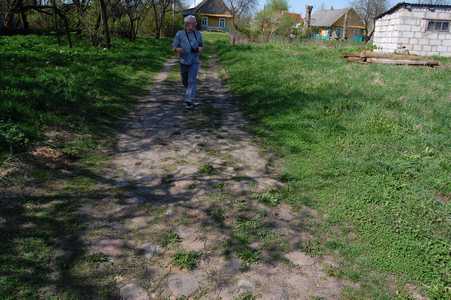 The road to the synagogue.
The road to the synagogue.
In 1870, Svir had a synagogue which had probably been founded much earlier. Now, there are only the foundation stones left and a paved road that once led to it. In the late 19th century the Rabbi of Svir was Naftoli-Dovid Mosenzon. At the beginning of the 1900s, Bund organization operated in Svir. The main occupations of the Jewish population in the 19th - early 20th centuries were trade and crafts. In 1912, there worked a Jewish loan-saving partnership. In 1913, both tailors and both dressmakers, three lumbermen in Svir were Jews. Jews owned a pharmacy, a hairdresser’s, a restaurant, a watchmaker’s, three bakeries, 45 shops and stores (including the jewelry store, toy store, 5 butcher’s, 5 pubs, two tobacconist’s, 5 manufactory shops). Between 1920s-1930s, there were representatives of various Jewish parties and organizations in Svir. In the mid-1920s, there opened a branch of the Jewish cooperative bank. In 1920s, there existed “Tarbut” school network. In 1925, 820 Jews (52.9%) lived in Svir. 

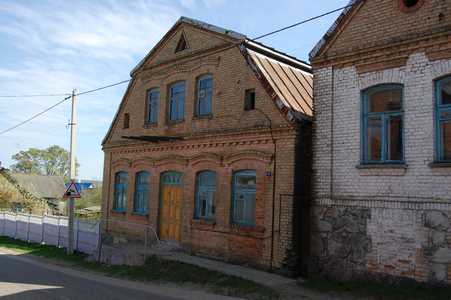 Old Jewish houses.
Old Jewish houses.
Four days after the war breakout on June 26, 1941, Svir was occupied by the Wehrmacht forces. It’s clear that practically no one managed to escape. In September 1941, the Judenrat was established, in November the ghetto. In February 1942, about 250 Jews were deported to a labor camp in the village. Zhirmuny. Part of the Jews were shot in the settlement of Kobylnik (Naroch). In August 1942, almost all the remaining Jews in Svir were deported to ghettos in Mikhalishki and later eliminated. I’m standing on top of the mound together with Viktor Iosifovich Suboch, the chairman of the Svir village council. The settlement is at the bottom and further is the lake. The day is sunny, clear and the landscape can be seen for many kilometers around. A picturesque sight. - Before the war, there lived many Jews in Svir and the neighbouring villages of Konstantinovo, Naroch. In 1898, there were 34 Jewish shops, 3 inns in Svir. The owners were Jews. There were many craftsmen - tailors, shoemakers, coopers, cabinet makers, glaziers… There was a high wooden two-story synagogue. After the war it was used as a warehouse, and then got unfit for use and dismantled. On the site of the hospital complex there stood a Jewish hotel. It always had no vacancies and brought profit, which proves the fact that business people and merchants came quite often to Svir. After the war there was a nursing facility for the elderly there. Now it is used for household needs. The red brick house was an inn. People of different faiths lived in Svir, but there had never been major conflicts on ethnic or religious grounds. The neighbors argued sometimes, but there had never followed something more serious, a conflict or an opposition. We believe that 1,200 people were killed during the war in Svir. People weren’t shot here, but taken away to be executed in other places… After the war several Jewish families lived in Svir, but there was no community any longer. Children and grandchildren of our countrymen visit us. Last summer (2011) a family of four came, their grandparents were from Svir. A couple of years ago people came from Brazil. There are many descendants of our countrymen living around the world. They leave their contact addresses, but for various reasons, we haven’t established any contacts yet. There are remnants of the old Jewish cemetery, which is almost on the lakeshore. It’s very seldom that anyone goes there. Several years ago a new road was built, so some graves were dug up. I was told the following story: there was a fish farm team on the lake. The fishermen used one gravestone as a dining table. 
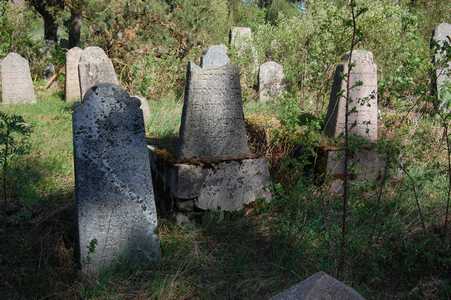
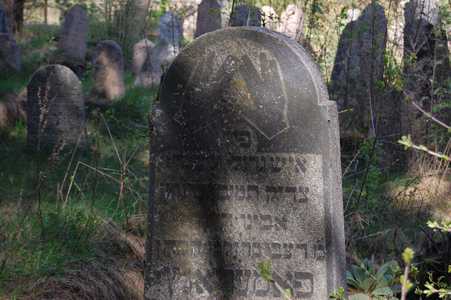


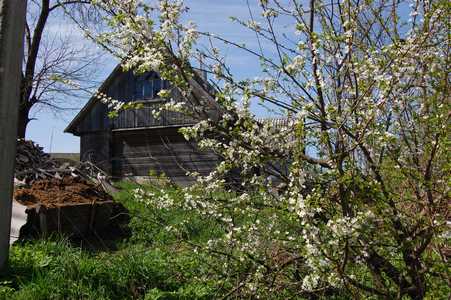 The Jewish cemetery.
The Jewish cemetery.
 The gates of the Jewish cemetery.
The gates of the Jewish cemetery.
Once, Jews from England came to Svir and were visiting the cemetery to read a prayer. The fishermen called the police, probably, frightened by something. The police arrived at the place. And the driver who had brought the foreigners was fined for trespassing on the territory of the fishing cooperative. Thanks to the efforts of Michael Lozman, a US citizen, director of the project for the restoration of Jewish cemeteries in Eastern Europe, a dentist from the city of Albany (NY), a fence around the cemetery was constructed in Svir, and the cemetery territory was cleared of bushes and fallen trees. Michael Lozman said: “My father, a carpenter from the village Sopotskin, Grodno region, and mother, a housewife from Mogilev, had left for the United States before the Second World War. Two of my brothers and I became doctors, like my parents dreamed.” In 2001, Michael came to his parents’ native land. “I was saddened by the neglected old Jewish cemeteries, as after the Holocaust the Jews didn’t return to their homes. That's why I took up their restoration.” Over several years, together with American students, professors, teachers and Belarusian students, cemeteries in the villages of the Grodno and Minsk regions have been restored and improved. Arkady Shulman,
|
|||
|
|
Jewish settlements in Minsk regionMinsk • Berezino • Bobr • Borisov • Dolginovo • Dukora • Dzerzhinsk • Ivenets • Myadel • Nesvizh • Obchuga • Pogost • Rakov • Seliba • Slutsk • Svir • Uhvaly • Vileika • |
Main |
New publications |
Contacts |
Site map |
Vitebsk region |
Mogilev region |
Minsk region |